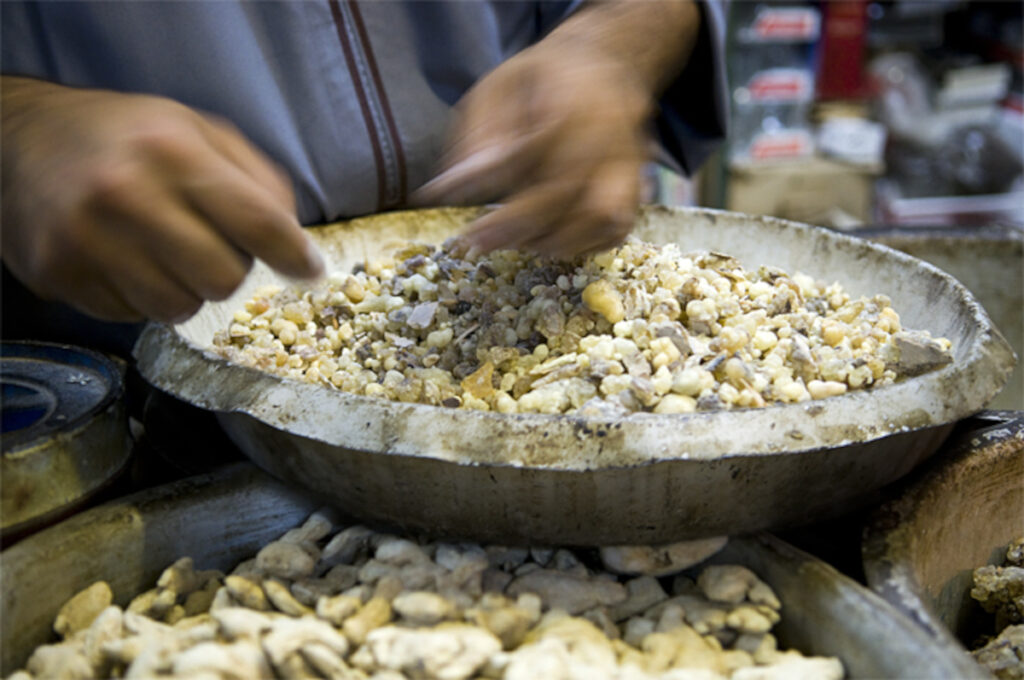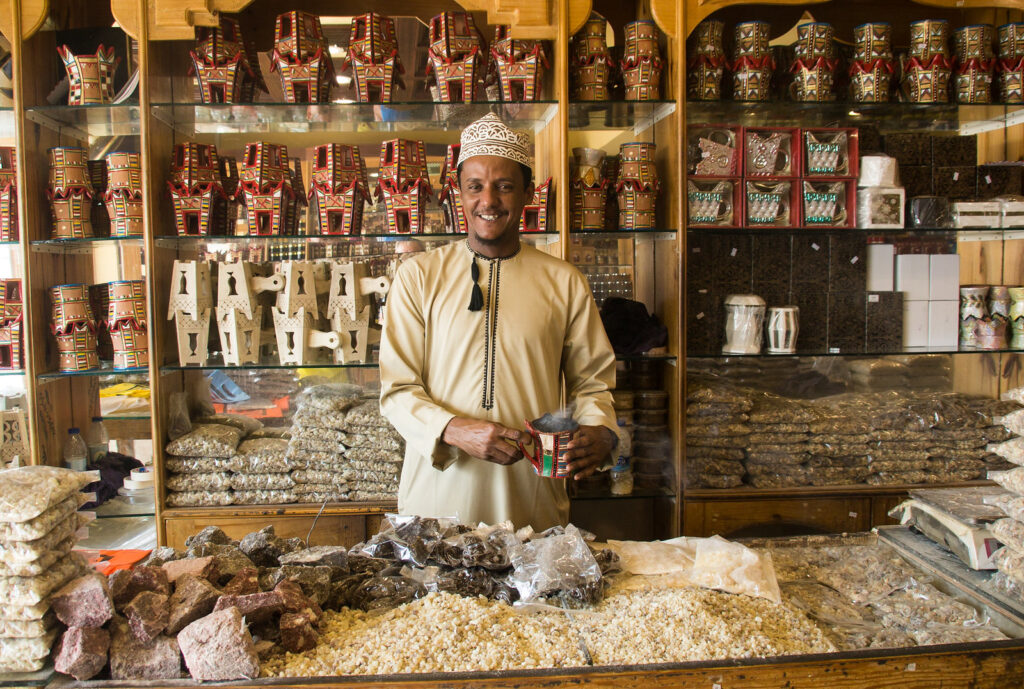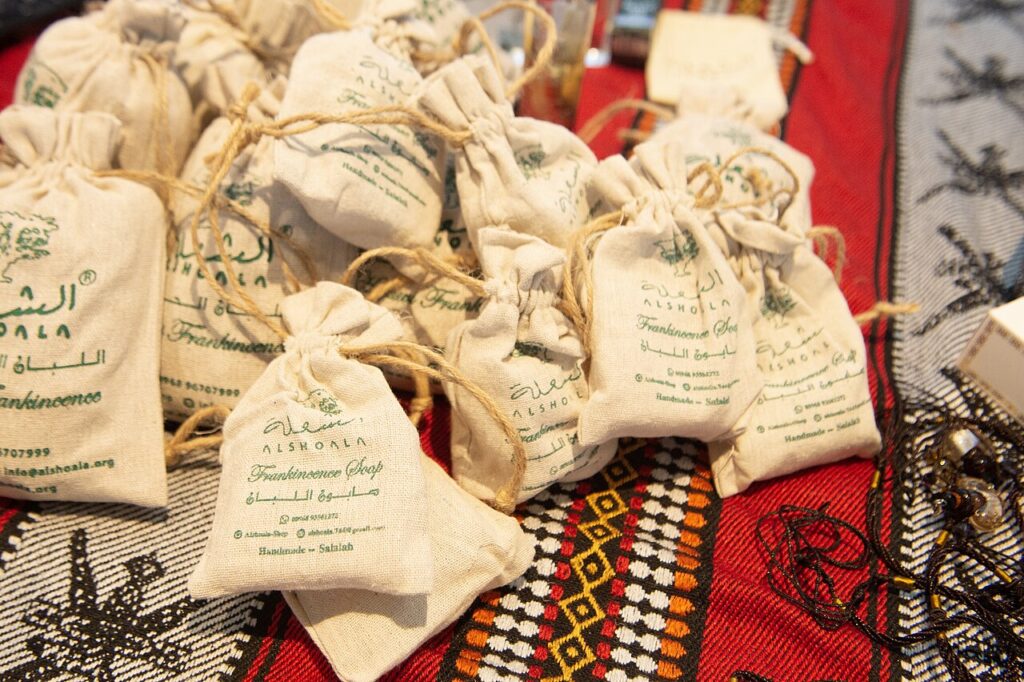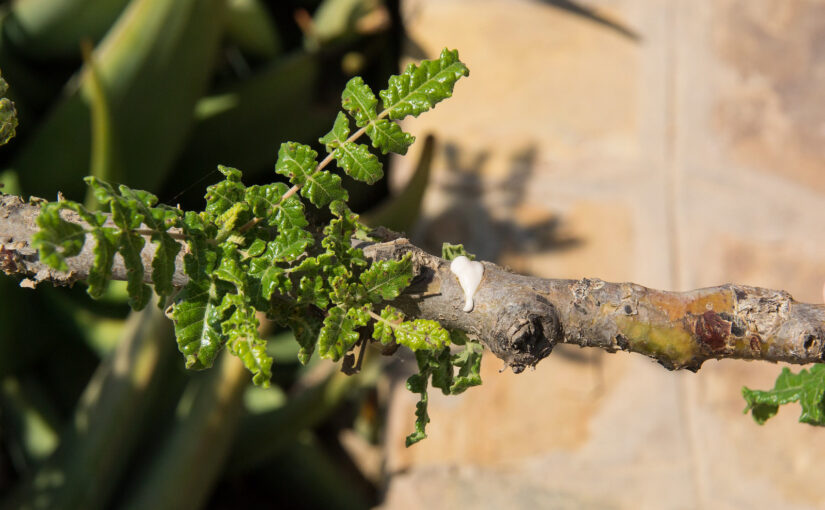In the southern region of Oman, where rugged mountains meet the monsoon-kissed air from the Indian Ocean, an ancient fragrance still permeates the dry winds. Here, on rocky plateaus and wind-battered slopes, the Boswellia sacra tree clings tenaciously to life. For millennia, generations of Omanis have returned to these hills to harvest what they call their “white gold”: frankincense. This aromatic resin has shaped not only the landscape but the identity, spirituality, and economy of Oman. Its story is not only a tale of trade and tradition but also a testament to the enduring allure of a sacred scent that still captivates aromatherapy enthusiasts, natural wellness seekers, and admirers of the world’s great botanicals.
The Botanical Origins of Omani Frankincense
At the heart of Oman’s frankincense tradition lies the Boswellia sacra tree, sometimes overlooked in favor of its more imposing botanical neighbors but revered for its resilience and aromatic bounty. These ancient trees anchor themselves deep into the stony ground of Dhofar. Their gnarled branches and sparse leaves convey a hard-won survival, thriving where few others can. The region’s unique climate, particularly the interplay of dry heat and periodic monsoon humidity, creates the ideal conditions for the highest quality resin to form.
Harvesting the resin is both an art and a precise science, passed down through generations. Older Omani harvesters, like Said Ali Al Mahri and his cousin Said Mohammed, ascend into the highlands each harvest season, between April and October. With sharpened knives, they make careful incisions in the bark. The first flows produce a lower grade of resin, but subsequent taps yield the finest, purest tears of frankincense. This process requires patience, skill, and respect for the tree’s health. Cutting too deeply or too often endangers the tree, risking its life and the legacy it sustains.
Frankincense in Omani Culture: Traditions and Rituals
Frankincense is woven into nearly every aspect of Omani life. It is far more than a product, taking on the roles of protector, healer, and connector to the divine. On any given day, its sweet, spicy smoke curls through homes, marketplaces, and mosques. It is used to freshen clothing, purify spaces, deter insects, and bathe visitors in a welcoming scent. Some Omanis dissolve frankincense nuggets in their water to ease coughs, treat asthma, enhance concentration, or even chew them much like gum for oral hygiene.

Beyond practical uses, frankincense is steeped in lore and ritual. Omani tradition holds that a demon resides under each tree, and so before harvesting, practitioners were once careful to drum, sing, and even offer sweets at the foot of each trunk to appease the spirits. These customs, meant both to safeguard the harvesters and conserve the trees, reflect a deep respect for the land’s mysterious powers and a recognition of the resin’s sacred status.
The resin is also an accompaniment to life’s milestones and daily rhythms. Whether burned during prayer, used to perfume garments, or featured at family gatherings, its presence signals moments of reverence and connection. As one vendor in the Muttrah Souk explained, frankincense, like a garden, cannot be taken with you when you travel, yet it remains a symbol of home and belonging.
Historical Significance and Global Reach
Omani frankincense has always been prized far beyond its desert birthplace. Ancient Egypt imported the resin to honor pharaohs, using it in burials and temple offerings. Roman emperors considered it a tribute worthy of gold. The biblical Magi famously bore frankincense as a gift to the Christ child, linking the resin to narratives of both divine worship and worldly power.
Long camel caravans once crossed the barren expanses from Dhofar, carrying the resin along the “Frankincense Road” to Mekka, Gaza, Jerusalem, and Alexandria. The journey could last a hundred days, with each stop cementing Omani frankincense’s status as a highly sought commodity. Dignitaries from Tutankhamun to Nero prized its aroma, while in Christian traditions, it became an emblem of mystery and solemnity as it drifted upward in cathedral liturgies.
Despite its legendary reputation, the very source of frankincense remained mysterious for centuries. Europeans debated whether it was mineral or plant in origin, lending an aura of magical secrecy to every glittering granule.
Modern-Day Oman: Frankincense in Contemporary Life
While the ancient trees still stand in Dhofar and major sites like Wadi Dawkah, Salalah, and Khor Rori, the practice of harvesting and using frankincense is facing new challenges and transformations. With the wave of modernization that swept Oman after the rise of Sultan Qaboos in 1970, many formerly nomadic families settled in towns and cities. New infrastructure, education, and opportunities drew people away from the hardships of mountain harvesting.

Today, frankincense finds itself at the intersection of old and new. It remains a staple in Omani homes and markets, used daily for scenting and medicinal purposes, and forms the heart of vibrant trade in the legendary souks of Salalah and Muscat. Vendors, such as those in the Al Hafa Souk, proudly display four grades of resin, from dark brown with bark included to the highly prized greenish, nearly transparent Royal al-Hojari frankincense.
The resin is also celebrated in Omani cuisine and wellness tourism. In upscale hotels and resorts, spa offerings include frankincense oils for massage and inhalation, while creative chefs integrate the resin into desserts, ice creams, and signature cocktails. At the Alila Hinu Bay Resort, for example, visitors can embark on a culinary journey that features frankincense in nearly every course, while nearby spas offer treatments designed to harness its reputed healing powers.
Table: Grades of Omani Frankincense Resin
| Grade | Color/Appearance | Typical Use | Relative Value |
|---|---|---|---|
| Royal al-Hojari | Greenish, almost transparent | Perfume, high-end remedies | Highest |
| White/Milky | Light, nearly white | Water infusions, chewing | High |
| Amber | Yellow to honey-brown | Burning for scent, blends | Moderate |
| Dark Brown | Dark, with bark inclusions | Basic incense, fumigation | Lower |
Family and Continuity: Stories from the Hill Country
Personal narratives from Dhofar tell of a way of life on the edge of extinction. Elders like Said Ali recall trekking for days with family and camel caravans to gather the precious resin, trading it on the coast for rice and dates. Despite hardships, these journeys were remembered for their camaraderie and songs that lightened the load as the sun beat down. The work forged strong family ties and a profound connection to the wild, sacred trees.
Today, this tradition is threatened. Younger generations view frankincense harvesting as too arduous and unprofitable, favoring easier livelihoods in urban areas. Even within families renowned for their harvests, such as the Al Mahris, there are fears that the knowledge and passion may die out unless new incentives and programs are created to attract and train the next generation.
Aromatherapy and Health: Frankincense’s Revered Properties
Few botanicals rival the reputation of Omani frankincense in aromatherapy. Its incense, essential oils, and resin extracts are believed in Omani tradition to confer a host of benefits, from respiratory relief to cognitive support and spiritual uplift. In local practice, Omanis may dissolve the resin in drinking water for soothing throat and lung complaints or chew it to clean teeth and freshen breath.
The scent profile of top-grade Omani frankincense is complex and captivating, combining notes of citrus, pine, vanilla, and amber. Burning the resin produces a smoke that is both calming and purifying. Its essential oil is highly valued in natural perfumery, high-end cosmetics, and therapeutic applications, offering a fragrance considered uplifting and centering.
In spa settings throughout Oman, frankincense oil massages promise relaxation and holistic well-being. The resin’s reputed anti-inflammatory and antimicrobial qualities have informed local remedies for centuries, although claims are passed down more as cultural wisdom than as codified science.
Health and Wellness Uses
- Diffused as incense for prayer and meditation
- Mixed into water for oral and respiratory wellness
- Chewed to clean teeth and gums
- Applied in massage oils for relaxation and skin care
- Incorporated in perfumes, creams, soaps, and scented candles
Culinary and Sensory Experiences: Modern Innovations
Innovative Omani chefs are exploring the frontiers of frankincense beyond its ancient uses. While heating the resin too much makes it bitter, careful preparation allows its unique flavor to enhance ice creams, sauces, and desserts. Bartenders at luxury resorts blend frankincense essence into cocktails for a signature, unforgettable twist.
At home, simple dishes may feature frankincense-scented tea or water, and market-goers can purchase a multitude of frankincense-based products. Vendors offer advice on selecting the best grades based on the resin’s clarity, color, and aroma. The shared ritual of burning frankincense after a meal or during a gathering remains a symbol of warmth and hospitality.
Challenges and the Question of Sustainability
The legacy of frankincense is at risk, not only from cultural shifts but also from ecological pressures. Overharvesting, poor harvesting techniques, and environmental threats, such as invasive species, overgrazing, and even pests like the longhorn beetle, endanger Boswellia populations across their native range.

In Oman, there are efforts to regulate harvesting practices. Only Omanis can legally tap the resin, and a registry helps ensure that only knowledgeable harvesters are allowed. Trees, especially the older and most productive, are given rest years to recover. However, such measures must be taken seriously and enforced robustly to ensure the species’ long-term survival.
Researchers highlight broader regional challenges as well. The territory suitable for Boswellia sacra is limited and fragile. Elsewhere, especially in the Horn of Africa, related species have suffered from both environmental disruption and poor reproductive success. In Ethiopia, studies show alarmingly low regeneration rates, signaling a warning for Oman’s trees.
Toward Mindful Appreciation: Ethical and Sustainable Choices
There are clear paths forward for those who wish to honor frankincense’s rich heritage while enjoying its many benefits. As a traveler or consumer, ethical appreciation means purchasing from reputable sources that respect local traditions, support sustainable harvesting, and contribute to the preservation of Omani culture.
Visiting frankincense markets in Salalah or the souks of Muscat, travelers can engage directly with vendors who understand the resin’s provenance and grading. Experiencing a guided harvest or spa treatment can enrich understanding of both the plant and the people who nurture it. Guests are encouraged to select products made with high-quality, ethically harvested resin and to honor the skill and labor behind every piece.
Practical Tips for Mindful Enjoyment and Aromatherapy
- When using frankincense resin, start with a small amount on charcoal or in a diffuser to release its aroma.
- For essential oils, use a reputable supplier with clear source provenance.
- Experiment with adding a single resin bead to hot water or herbal tea for a unique twist.
- Consider frankincense-infused skincare or massage products as part of a relaxation ritual.
- Support Omani artisans and businesses focused on sustainable, traditional harvesting practices.
The Future of a Sacred Scent
Omani frankincense remains, after thousands of years, a bridge between the natural world and the realms of culture, wellness, and spirit. Its survival depends not only on the trees and the hands that tend them but also on the conscious choices made by everyone who cherishes its aroma. By learning from and supporting Omani traditions, each person becomes a participant in an unbroken lineage of appreciation for one of the world’s most storied aromatics.
Header image by Rita Willaert.
If your heart finds joy and inspiration here, consider supporting the work that keeps these stories blooming. Your donation, no matter the size, helps sustain authentic research, creative writing, and the spirit of sharing that connects us all.
